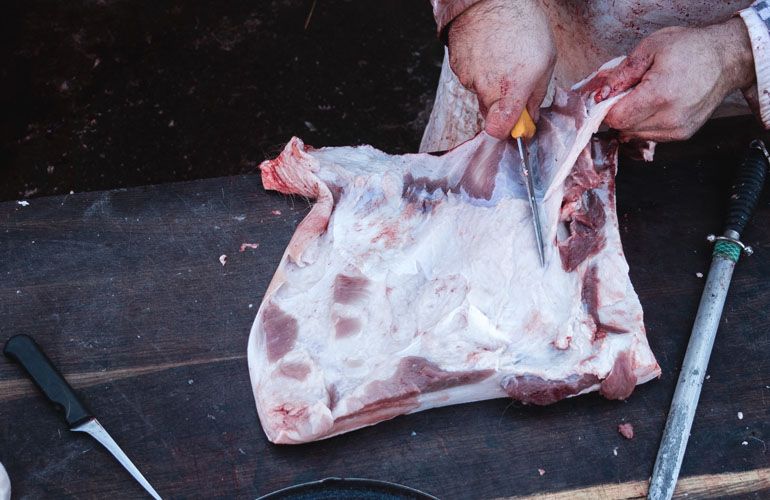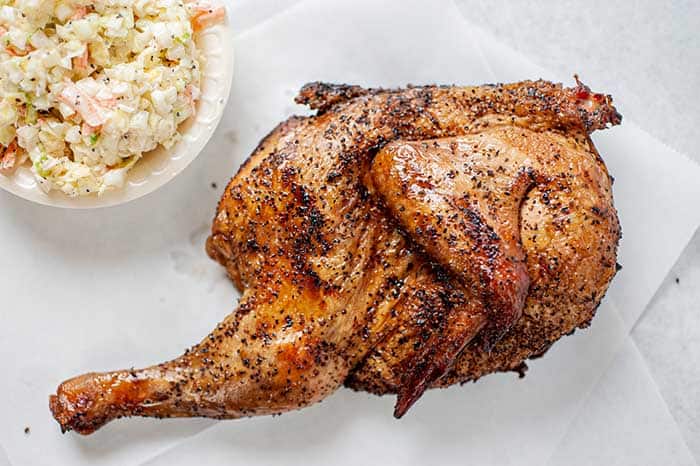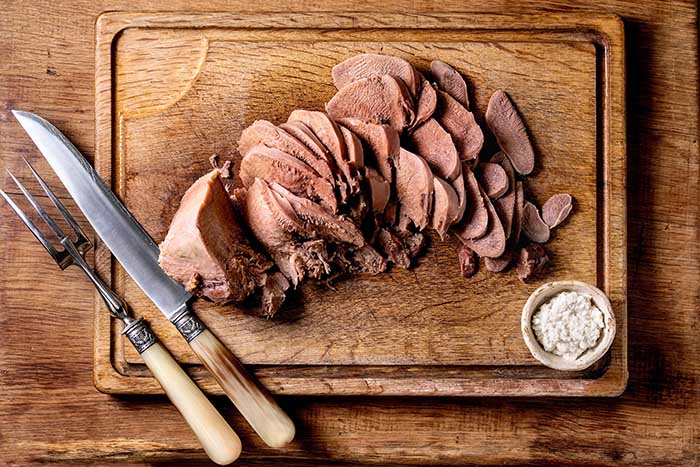Need your frozen chicken thighs, wings, or breasts to thaw quickly for cooking? From cold water baths to slow cookers and instant pots, here are four easy ways to defrost raw chicken fast.
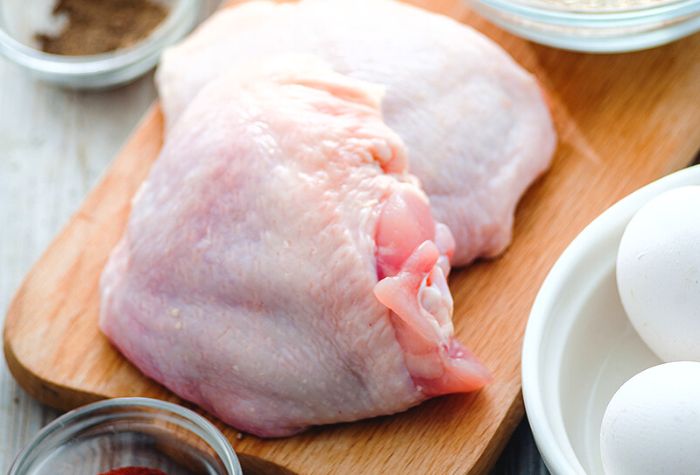
Handling chicken can be tricky, and there are a lot of ways to get it wrong. Poor preparation can lead to bland-tasting meat or even food poisoning.
Improper defrosting is one of the biggest culprits for this, but is a trap that a lot of us fall into.
We’ve all been under pressure trying to cook on time for guests. It’s easy to get ahead of yourself and cook meat when it’s not ready or safe. This includes chicken that hasn’t properly thawed. This isn’t just unpleasant – it’s a safety hazard.
But what if you’re in a hurry? Is there a quick and safe way to do it? Here’s how to defrost chicken fast.

The best way to defrost chicken quickly is to submerge it in cold water. This method needs 30 minutes per 2lbs of meat and is your best bet for protecting your meat against bacteria growth.
The best and safest way to defrost poultry is by leaving it to rest in your refrigerator overnight. This will allow the chicken to defrost at a steady and safe temperature.
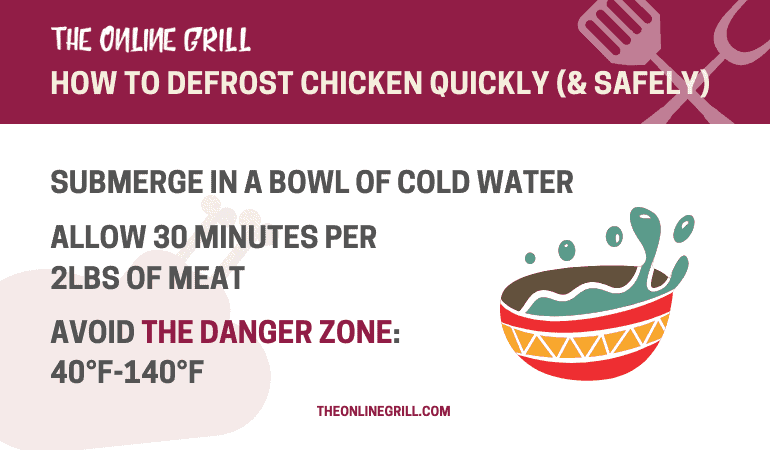
While this is not a quick method, it allows meat to reach a thawed state without exposing it to the temperatures that enables bacteria to thrive on its surface.
Known as the ‘danger zone’, this is the range between 40°F and 140°F (5°C to 60°C) where bacteria grows fastest, doubling within 20 minutes.
This is why many people misjudge defrosting. You need to allow the chicken to thaw but without any meat falling in the danger zone temperature for a prolonged period. These are the 4 best ways to do it quickly and safely.
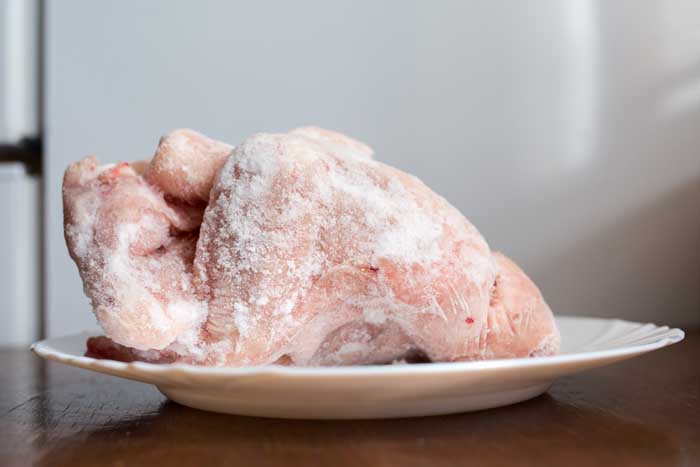
Cold Water Bath
Kicking off this list is a method tried and trusted by professional kitchens everywhere. Often called the cold water bath, this method is one of the fastest while also the best at preserving the meat’s quality.
Fresh meat always tastes better than defrosted, but this method allows the chicken to retain much of the flavor and textures you’d get if you were cooking it fresh.
This technique takes 30 minutes for 2 pounds (about 900 grams) of chicken meat to thaw and doesn’t need any special bits of kitchenware to do.
Fill a large bowl to two-thirds or three-quarters full with cold water, and submerge your meat in it. To keep the water fresh and at an ideal cold temperature, refill the water every 10 minutes.
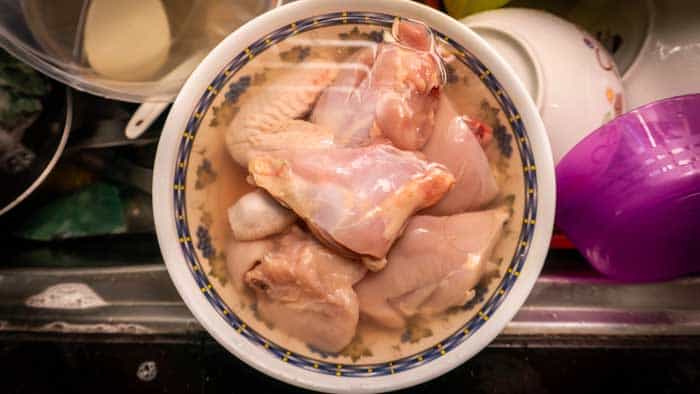
A whole chicken will take longer than thighs, wings, or breast. To get around this, you can speed things up by separating the bird as it thaws. This will help the water work its way into more areas of the bird, including the cavities.
Pro tip: Ensure you use cold water. This will help stop the meat from falling into the danger range of 40°F to 140°F, where bacteria develops fastest.
Microwave
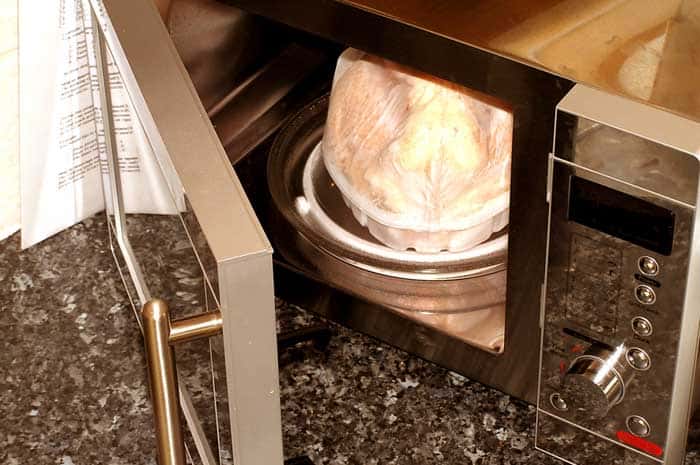
Tried and tested for years, using a microwave is one of the most widely relied on meat defrosting methods.
But while this method is quick, needing only 5 to 10 minutes, it does need you to pay close attention as it defrosts. It’s easy for this method to stray into the range where you start to cook rather than thaw. This can ruin your meat texture, making it very tough and exposing the meat to bacteria growth.
It’s essential you get this right. If your temperature is too high or microwaving time is too long, it’ll ruin it. The ice in the meat will turn to water and then steam, cooking it from the inside.
Check the meat every one to two minutes, for when it has defrosted. Once it’s ready, transfer it to your grill or oven for cooking.
Check out my guide on how to smoke a whole chicken
Be careful. This method is only good for skinless, boneless chicken breasts and not for any parts of the bird that contain bones.
Many modern microwaves have defrost settings, but if yours doesn’t I recommend using a medium-low setting for two to three minutes. After this, turn the chicken over and microwave low for a further two minutes per pound of breast. Be sure to stop the microwave and flip it every minute until it has thawed and is ready to cook.
The microwave is one of the quickest and easiest methods to use, but it risks overcooking and ruining meat. It also can’t work with any cut of chicken containing bone, including wing or thigh.
Hot Water Stream
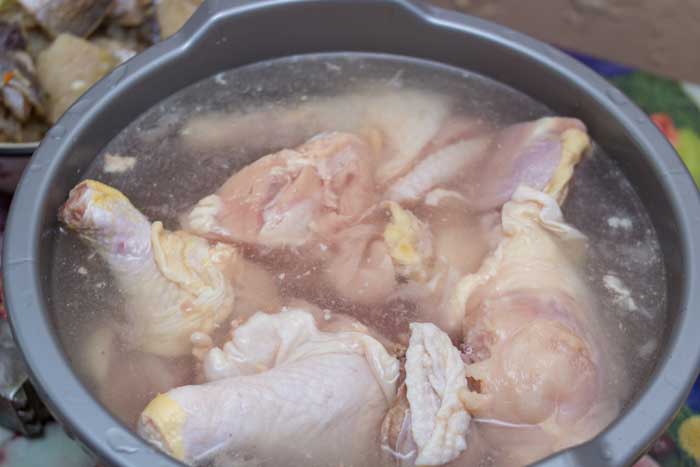
Using hot water is an excellent last resort if you don’t have access to a cold water bath or microwave. You will need to get your temperature readings dead-on, so you will need an accurate meat thermometer for the best results.
I mentioned earlier that meat temperatures for chicken between 40°F and 140°F run the risk of allowing bacteria to thrive, putting you at risk of catching food poisoning.
Where this and cooking cold chicken differ is that the high temperatures in a grill or oven mean that meat is only in this temperature range for a very short amount of time, which means that the bacteria doesn’t have enough time to develop. We can use the same principle to apply to using hot water.
Place the chicken in a large bowl, and insert a meat thermometer into the thickest part of its flesh.
Keep a constant stream of hot water pouring over the meat. Allowing it to sit in hot water means that the water will cool down, making it ineffective.
Ensure that you cook it immediately after thawing so that the surface of the chicken is not exposed to the effects of bacteria.
Slow Cooker
OK, so this isn’t strictly thawing, but cooking directly from frozen can work with some forms of cooking. Slow simmering recipes (like stews, curries, and soups) are great examples of this. These methods submerge the meat in hot temperatures, letting them cook without leaving them prone to bacteria growth.
Pro tip: You will need more time than usual to cook the chicken. As a rule, allow about 50% more time for it to cook thoroughly.
FAQ
The Final Word
Ultimately, the best way to defrost chicken is always in the refrigerator overnight. It allows the meat to thaw completely without the risk of developing harmful bacteria.
Not only is it safe, but it thaws your meat evenly so that it can cook beautifully without losing any quality.
Unfortunately, we don’t always have the luxury of time on our side, so a quick thawing method is a good workaround.
Of the four methods above, using a cold water bath is the best. It works for any cut of chicken, boned and boneless alike, and thaws your meat evenly and safely.






